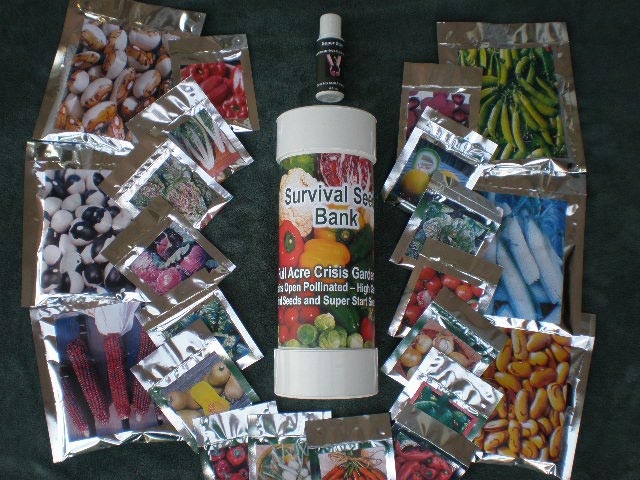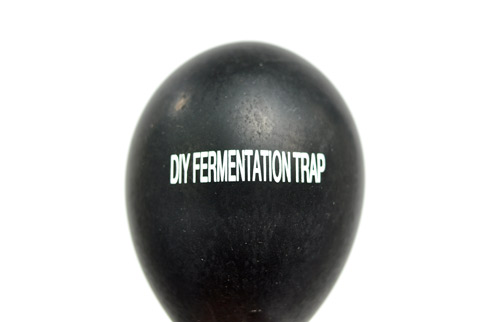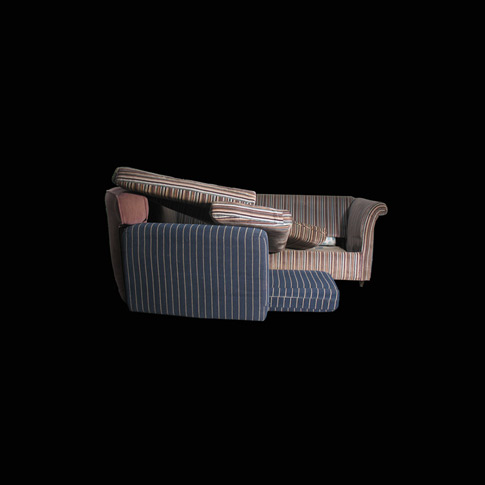It is a truth universally acknowledged that many Californians, despite willingly living on land that could open up at their feet and swallow them whole at any given moment, possess nothing even remotely resembling a proper emergency kit. Until very recently I was no exception. I was born and raised in California and have ridden out more earthquakes than I care to count, and still it took me until I was in my early 30s before I finally ordered a pre-packed bag full of emergency supplies from the Red Cross. Of course my grasp of what to do with the many items in that backpack is tenuous at best, but I’m operating under the assumption that if disaster strikes I’ll have a spare moment to read its enclosed manual.
Upon first inventory the purpose of the contents of Whitney Lynn’s survival kit might seem similarly mysterious, but here too there is a manual. Her pamphlet immediately inspires confidence with its promise of useful information, its cover printed with an official-looking logo as well as a variety of acronyms that could be military codes. Lynn did not make these up; they are actual acronyms that would be familiar to anyone in the survivalism movement. For example, “SHTF” stands for “Shit Hits The Fan”. “TEOTWAWKI” is “The End Of The World As We Know It”. Survivalists do have a sense of humor.
By inviting participation in the piece Lynn quickly draws you into an imagined narrative, encouraging you to picture yourself in a situation in which this kit might be necessary and useful. Perhaps you’ve chosen to sequester yourself away in the woods to kick-start your creative process with a dose of isolation and would use the items to meet some of your basic needs, like the alcohol you can make with the yeast and the balloon. In a more pessimistic scenario, perhaps one of the laundry list of catastrophes called out in the pamphlet has occurred and it’s every individual for themselves, in which case assembly of the DIY Survival Weapon, cleverly labeled as such, takes on a new sheen of urgency. In any event you can always draw motivation from the artwork on the back of the pamphlet, included to provide inspiration.
Our ancestors who lived a lot closer to the land than many of us do might be puzzled about why we would need this kit, and they would also probably laugh at the earnestness with which the present-day sustainability movement exhorts all human beings to reduce/reuse/recycle. There was a time when such a philosophy wasn’t even optional. However, in these days of industrial agriculture and the supermarkets’ pale, hothouse-grown tomatoes, it can feel like a powerful decision to eat a fresh heirloom from a home garden or a local farm. But then ideas about self-sufficiency are taken to a whole other level by the modern survivalists who in the case of societal collapse are prepared to live completely by their own means — and surrounded by all the supplies they have purchased in advance.
Lynn has chosen banal, everyday objects for her kit but invests them with unexpected meanings by framing them up within the new context of “failure management“, and in this way she nods to the genuine resourcefulness and creativity required to be a successful survivalist. She has also created a cohesive brand for the kit that slyly pulls from survivalism literature and terminology, referencing both the consumerist culture that survivalists need in order to stock their bunkers as well as the fear of its disintegration that drives their actions. Buy early and buy often, before there are no stores left.
The ideal of stubborn individualism is deeply ingrained in the stories of the early United States, from almost-mythical figures like Daniel Boone and Davy Crockett to images of the ‘49ers and other pioneers staking out new territory during the country’s insatiable expansion west. Modern survivalists might feel like they are tapping into that spirit of the original American do-it-yourselfers when they visualize themselves hunkering down alone in a well-provisioned cabin. Except the people who actually did survive in those days of yore were the ones who turned to their neighbors for mutual help and support instead of locking their doors against them.
Heidi De Vries works as a manager at an advertising company by day and freelances as a writer and a music consultant. She is also a volunteer DJ at KALX Berkeley 90.7fm, and though her show is currently on hiatus she would be happy to recommend some awesome tunes for you anytime. You can find her at her blog, Engineer’s Daughter.




 – MAKE Magazine brings the do-it-yourself mindset to all the technology in your life. MAKE is loaded with exciting projects that help you make the most of your technology at home and away from home. We celebrate your right to tweak, hack, and bend any technology to your own will.
– MAKE Magazine brings the do-it-yourself mindset to all the technology in your life. MAKE is loaded with exciting projects that help you make the most of your technology at home and away from home. We celebrate your right to tweak, hack, and bend any technology to your own will.













